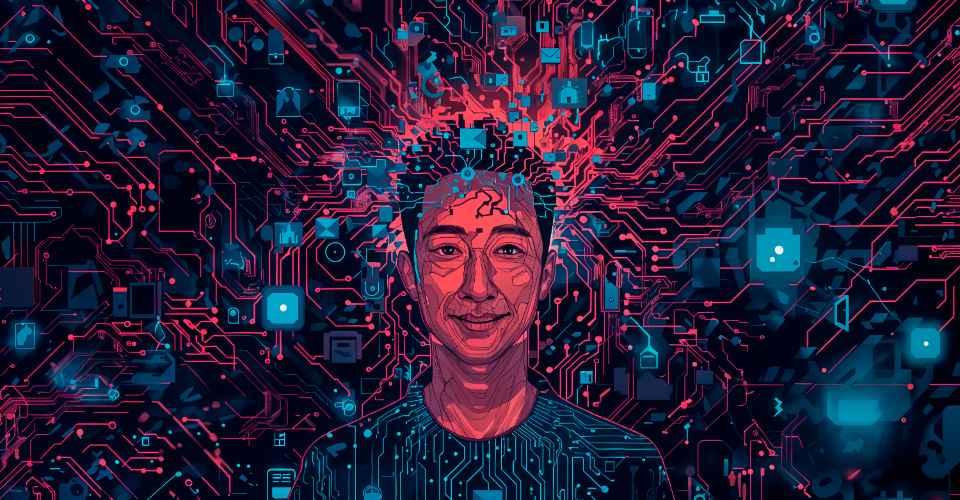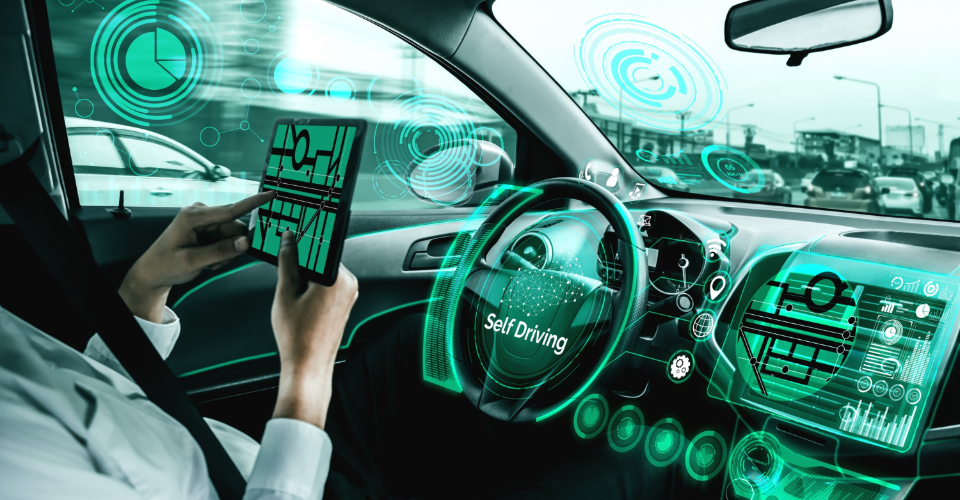Imagine a world where businesses can not only automate mundane tasks but also create innovative solutions in real-time, all thanks to a powerful new tool: Generative AI. From revolutionizing product designs to transforming entire industries, the possibilities are endless. What was once the realm of science fiction is now quickly becoming the foundation of tomorrow’s enterprise. But this is just the beginning. As we explore the next generation of AI, we will uncover its potential and understand how it will reshape the future of business.
The Evolution of Generative AI
A Brief History of Generative AI
Generative AI, a field of artificial intelligence that can generate new data from existing patterns, is already making waves across industries. From generating images to creating new designs and even writing code, generative AI has quickly evolved beyond simple applications. Today, AI is no longer limited to performing tasks; it is now capable of driving true innovation and creativity.
Why Generative AI is a Game Changer for Enterprises
The introduction of generative AI into business operations is not just a trend but a transformative force. By automating complex tasks and enhancing creativity, AI is enabling companies to stay ahead of the competition. Whether it’s improving efficiency in manufacturing or accelerating drug discovery, the potential of generative AI in business is immense.
Key Applications of Generative AI in Enterprises
1. Revolutionizing Drug Discovery and Healthcare
Generative AI is poised to transform the healthcare sector, particularly in drug discovery, by significantly reducing both the cost and time required to bring new medications to market. Traditionally, drug discovery has been a lengthy and expensive process, often taking up to 10 years and costing upwards of $1.8 billion per drug. However, with the advent of Generative AI, pharmaceutical companies are now able to accelerate this process, leading to faster and more cost-effective solutions.
By leveraging advanced AI techniques, companies can predict the most promising drug candidates and optimize their molecular structures more quickly than ever before. Generative AI enables simulations of drug interactions, allowing for the identification of the most effective compounds early in the process, thus avoiding costly late-stage failures.
Key Statistics:
- $1.8 billion: The average cost to develop a single drug.
- 30%: By 2025, Generative AI is expected to account for more than 30% of new drug discoveries, dramatically changing the pharmaceutical landscape.
- Months, not years: AI reduces the drug discovery timeline from several years to just months, making it more feasible to bring drugs to market faster.
This innovation not only benefits the pharmaceutical industry but also has the potential to accelerate advancements in personalized medicine, providing tailored treatments based on genetic data. By 2025, Gartner predicts that AI Innovation will play a critical role in the creation of groundbreaking therapies, from targeted treatments for specific diseases to vaccines developed in record time.
Generative AI’s integration into drug discovery is a prime example of Enterprise Innovation, where business automation is driving meaningful change and efficiency. The resulting AI transformation in healthcare holds the promise of saving lives, improving treatment outcomes, and reducing the overall burden on healthcare systems worldwide.
2. Transforming Material Science and Manufacturing
Generative AI is not only reshaping industries like healthcare and tech but is also revolutionizing material science and manufacturing. Traditionally, developing new materials required extensive trial-and-error processes, often taking years of experimentation. With AI Innovation, businesses can now leverage generative AI to create materials with specific properties more efficiently, accelerating the pace of innovation and discovery.
By using AI to model and simulate the behavior of materials, manufacturers can predict their performance under various conditions and optimize them for specific use cases. This approach, known as inverse design, allows engineers to define desired material properties—such as conductivity, strength, or resistance to wear—and let AI algorithms generate possible candidates.
This transformation has far-reaching implications for industries like automotive, aerospace, and defense, where material properties are critical to performance, safety, and cost. Generative AI opens up new possibilities for creating lightweight, durable materials, which is particularly beneficial in industries focused on energy efficiency and sustainability.
Key Benefits:
- Enhanced Material Properties: AI enables the creation of materials with superior characteristics, such as improved conductivity, greater magnetic attraction, or resistance to corrosion, all crucial for industries like energy, electronics, and transportation.
- Accelerated Development Time: The traditional process of material discovery can take years. With AI-driven methods, companies can significantly shorten development cycles, making it possible to bring new materials to market much faster.
- Cost Efficiency: By reducing the reliance on trial-and-error testing, companies can save considerable resources on research and development (R&D), leading to more affordable products.
- Customization: Generative AI can tailor materials for specific applications, allowing businesses to meet precise technical or environmental requirements, from aerospace components to medical devices.
With the power of AI Transformation, industries can innovate at an unprecedented pace, pushing the boundaries of what’s possible in material science and manufacturing. The future of materials lies in the hands of AI, offering a competitive edge for businesses embracing this technology.
3. AI-Driven Product and Chip Design
Generative AI is playing a transformative role in the design of products and semiconductor chips. The integration of AI innovation is allowing companies to accelerate design processes and achieve optimal configurations with minimal human input. One of the most significant advancements in this area is the use of reinforcement learning, a machine learning technique where AI learns to optimize decisions based on trial and error. This method has revolutionized the way engineers design and manufacture complex products.
The Impact on Product Development:
- Faster Product Lifecycle: Generative AI has dramatically reduced the time it takes to design and manufacture products. In chip design, for example, what typically took weeks can now be completed in just hours, reducing the product development cycle by as much as 10 times.
- Efficient Component Placement: AI algorithms can analyze millions of potential component placements in a fraction of the time it would take human designers, ensuring the most efficient configuration. This results in cost savings and higher-performance products.
- Optimized Design Solutions: Unlike traditional methods, AI doesn’t just optimize based on past data but also explores new design possibilities that might not be immediately apparent to human designers.
Statistical Data:
- According to recent studies, AI-driven design has reduced development costs by up to 30% in some industries, such as semiconductor manufacturing.
- The use of generative design tools has shown a 15-20% improvement in efficiency in industries like automotive and aerospace, where precision and speed are paramount.
4. Generating Synthetic Data for Research
As the need for large datasets grows, particularly in industries like healthcare and finance, generative AI offers an innovative solution: synthetic data. Synthetic data is artificially generated information that mirrors the characteristics of real data without revealing personal or sensitive details. This advancement plays a pivotal role in research and development, enabling organizations to push boundaries while ensuring compliance with privacy regulations.
The Role of Synthetic Data in Research
One of the main challenges researchers face is obtaining enough high-quality, real-world data, especially when it involves personal or confidential information. This is where synthetic data comes into play. By leveraging generative AI models, organizations can create data that is statistically similar to the original datasets but with no direct links to the actual individuals or proprietary information. This enables organizations to conduct research and analysis without exposing sensitive data to risks.
Benefits of Synthetic Data
- Preserves Privacy: By anonymizing personal information, synthetic data allows businesses to use data for analysis without violating privacy laws, such as GDPR and HIPAA.
- Fosters AI Innovation: Generating synthetic datasets can speed up the development of AI algorithms, as it allows for a broader range of testing and training scenarios.
- Reduces Data Scarcity: Generative Intelligent retrieval can create diverse datasets, especially in fields where data is sparse or hard to gather, such as in rare diseases or emerging markets.
- Cost-Effective Research: Generating synthetic data can be less expensive than obtaining real-world data, particularly in highly regulated industries.
Statistical Data on Synthetic Data Adoption
According to a McKinsey report, by 2025, over 50% of businesses in regulated industries will use synthetic data in their AI models. This trend is a significant step forward in accelerating AI transformation, particularly in business automation and data-driven research. As more industries adopt synthetic data, it is poised to play a crucial role in driving enterprise innovation and reshaping how research is conducted globally.
Through these innovations, generative AI is bridging gaps in data availability while ensuring that privacy and ethical considerations are maintained, making it an invaluable tool for modern enterprises.
5. Optimizing Design with Generative AI
Generative Intelligent retrieval is transforming how industries design and optimize parts, offering a significant advantage in manufacturing, automotive, aerospace, and other sectors. Through generative design, AI creates highly efficient, lightweight components while adhering to specific performance and production constraints. This ability to generate multiple design alternatives rapidly leads to optimized solutions that would be time-consuming and costly for human designers to develop.
Key Applications of Generative AI in Design:
- Improved Fuel Efficiency: In the automotive industry, generative AI helps create parts that are optimized for fuel efficiency. By reducing weight and enhancing aerodynamics, AI-designed components contribute to more energy-efficient vehicles. For example, car manufacturers are using AI to design lighter car frames and engine parts, significantly improving fuel economy.
- Speed and Precision in Testing: Traditionally, testing design iterations could take weeks or months. However, AI can simulate and evaluate hundreds of potential designs within hours. This acceleration in the design process leads to quicker decision-making and faster time-to-market for new products. For instance, in aerospace, generative Intelligent retrieval is used to design parts like aircraft wings, where precision and weight reduction are crucial for performance.
- Cost Reduction: With generative Intelligent retrieval, companies can reduce material waste by ensuring that only the necessary amount is used for production. The ability to create designs that are not only optimized in terms of function but also material usage leads to significant cost savings.
Statistical Impact:
- According to a report by McKinsey, companies that implement generative design can reduce production costs by up to 25% and decrease material waste by 40%.
Future Outlook:
The integration of AI innovation in design processes is revolutionizing industries, contributing to enterprise innovation across sectors. As generative Intelligent retrieval continues to evolve, its role in business automation will become increasingly essential, enabling organizations to stay competitive in an ever-changing market.
Embedding Generative AI for Maximum Impact
Overcoming the Challenges of Implementing Generative AI
While the advantages of Generative Intelligent retrieval are clear, the path to adoption comes with its own set of challenges. AI Innovation is a powerful tool, but to fully harness its potential, enterprises need to carefully plan and integrate it into their operations. This is particularly true for large organizations that must address both technological and human factors when embedding new AI systems.
1. Building the Right Infrastructure
One of the biggest obstacles to adopting generative robotics is the need for a robust infrastructure. Many businesses struggle with the volume and complexity of data required to train AI models effectively. To successfully implement AI, companies must invest in high-performance computing resources and scalable data storage solutions.
- Data Management: Handling vast amounts of data requires advanced data pipelines and storage solutions.
- Computational Power: AI models, especially generative ones, require significant processing power, often relying on cloud solutions or specialized hardware like GPUs.
2. Training Teams to Work with AI
Generative AI isn’t just a tool that can be deployed out-of-the-box; it requires a skilled workforce capable of collaborating with these advanced systems. AI Transformation involves upskilling employees to understand AI’s capabilities and limitations. This means training both technical and non-technical staff to use AI systems effectively, ensuring smooth integration into the business workflow.
- Cross-Department Collaboration: AI systems often require input from various departments. Clear communication and collaboration between IT, operations, and other business functions are key.
- AI Literacy: Building a workforce that understands the basics of business automation and AI’s potential helps organizations maximize AI’s impact across departments.
Potential Risks and Ethical Considerations
With the tremendous power of Generative AI comes significant responsibility. As companies begin integrating AI into their operations, it’s crucial to acknowledge the risks and ethical dilemmas that arise from its use.
1. Deepfakes and Misinformation
Generative Intelligent retrieval can be used to create highly realistic fake images, videos, and audio clips, leading to the growing concern of deepfakes. While these technologies can be used for positive purposes, such as entertainment or training, they can also be misused to spread misinformation and harm reputations.
- Example: In 2023, a deepfake video of a political figure went viral, causing confusion and influencing public opinion.
2. Copyright and Intellectual Property Issues
Generative AI models often rely on vast datasets, some of which may contain copyrighted material. When these models generate new content, such as music, art, or even software code, questions arise about ownership. Who owns the rights to AI-generated content, and how can companies ensure that they are not violating intellectual property laws?
- Legal Complications: As AI-generated works become more common, intellectual property laws will need to evolve to address new challenges.
3. Security and Fraud Risks
AI-generated content, especially in the form of synthetic data, can pose risks related to security and fraud. Cybercriminals may exploit generative Intelligent retrieval to create fake documents, identities, or financial records, which could lead to significant security breaches and financial losses.
- Risk Mitigation: Companies must collaborate with cybersecurity teams to build robust safeguards and create secure environments for AI-generated data.
The road to implementing Generative AI in enterprises is filled with both opportunities and challenges. While businesses are increasingly using AI for business automation and enterprise innovation, they must also address technical, ethical, and legal hurdles. By developing the right infrastructure, training teams, and understanding the potential risks, organizations can unlock the full potential of AI while safeguarding against its challenges.
Ultimately, as AI transformation continues to evolve, businesses must approach generative Intelligent retrieval with a balance of excitement and caution, ensuring that they maximize its benefits while navigating the risks that accompany such powerful technology.
Key Takeaways
- Generative AI is revolutionizing industries like healthcare, manufacturing, and design by significantly reducing development time and costs.
- The potential for AI innovation in creating synthetic data and designing new materials is vast.
- As with any technology, it is crucial for businesses to understand and mitigate the associated risks of generative AI, including ethical concerns and security threats.
At a Glance
- By 2025, 30% of new drugs will be discovered using generative AI.
- Generative AI will help design materials with specific properties faster and more efficiently.
- AI in product design and chip manufacturing can reduce the development cycle from weeks to hours.
Frequently Asked Questions
What is generative AI and how does it work?
Generative AI is a subset of artificial intelligence that uses existing data to create new data. It can generate text, images, designs, and even code, making it a valuable tool for businesses in various industries.
How will generative AI impact the healthcare industry?
Generative AI is transforming drug discovery, helping researchers design new drugs in months rather than years. It also creates synthetic data, ensuring patient privacy while enabling research.
What are the risks of generative AI?
Generative AI poses risks such as the creation of deepfakes, privacy concerns with synthetic data, and intellectual property challenges. It’s important for businesses to implement safeguards.
Conclusion
The potential of Generative AI to transform businesses is immense. From speeding up drug discovery to designing new materials and creating synthetic data, generative AI is revolutionizing industries and driving innovation. However, its adoption must be handled with care, as there are risks and ethical considerations that must be addressed. By harnessing the power of generative Intelligent retrieval responsibly, businesses can unlock new opportunities and stay ahead in an increasingly competitive landscape.
Are you ready to embrace the future of business innovation? The age of generative AI is here!



















Leave a Reply